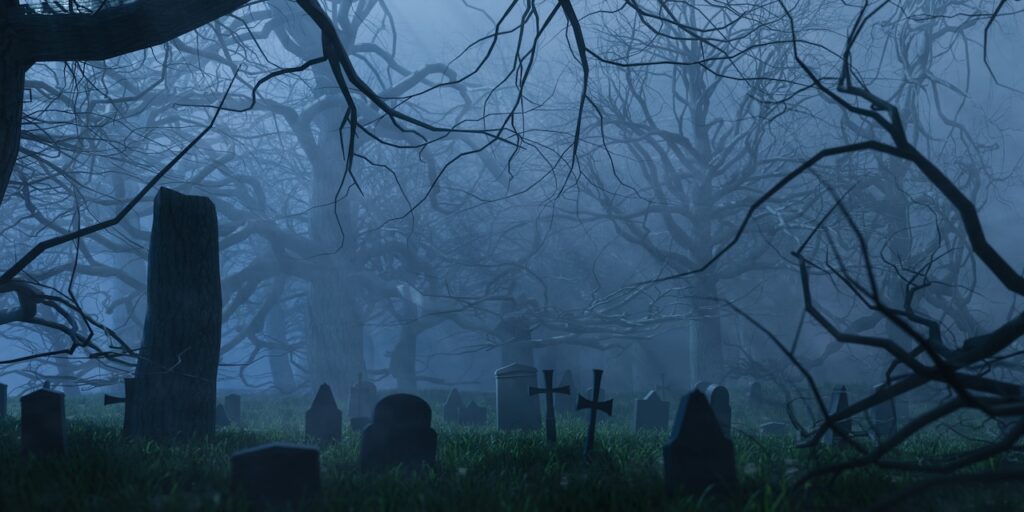Question: When I was an Evangelical I was told there was no such thing as ghosts and that paranormal phenomena were likely demons. What does the Church say about this? Doesn’t the Church teach that there are such things as “apparitions”? (Brandenburg, Kentucky)
Answer: The word “ghost” can refer to several different concepts. For instance, one use of the word “ghost” is as a synonym for “spirit” – think of how 100 years ago Catholics would refer to the Holy Spirit as the “Holy Ghost.” In that sense, since Catholics believe in spiritual beings, we would certainly believe in ghosts.
But when people say there is “no such thing” as ghosts they are generally using a more popular sense of the term to describe the souls of the dead who appear in, or otherwise interact with, the material world and those living in it. The Church doesn’t have a specific teaching on these kinds of ghosts per se, although we can draw conclusions from other areas of theology.
We believe that all human beings have an immortal soul that survives the death of the body, and which will eventually be reunited with their resurrected body at the end of time.
We also believe that the bonds of love can survive death, and that there can be communion between the living and those who have died – think of how we ask the saints to intercede for us with prayer. Within that communion, we sometimes read of people who report being visited and consoled by holy men and women, like Blessed Solanus Casey, and Blessed Pier Giorgio Frassati, during times of deep stress or illness.
Further, in accordance with our belief in purgatory as a time of post-mortem purification, we know that not every soul destined for heaven will get there right away. So, the idea of ghosts as souls who remain on earth due to some sort of “unfinished business” can be congruent with a Catholic world view.
Generally, hauntings or other paranormal ghostly activity are likely connected to one of two things: either demonic activity or a soul in purgatory who is somehow “stuck.” This is a situation where sincere prayers for the repose of that soul are in order.
Interestingly, the Church of the Sacred Heart of Suffrage, not far from the Vatican, contains a small “Museum of the Souls of Purgatory” which reminds us to pray for those souls, displaying what the little church says are worldly relics of souls in purgatory reaching out to friends and loved ones for prayers.
It is also possible that something that appears to be a supernatural haunting in a given instance is actually something with an entirely natural explanation.
In any event, we should never seek out hauntings or try to contact the dead ourselves through means such as Ouija boards, seances or psychic mediums. This is a grave sin against the first commandment and participating in such activities runs the risk of opening a door to the demonic in our own lives.
On the other hand, apparitions are our term for instances when a person from heaven – most often Our Lady – appears to a person or people for a particular purpose or with a specific message, as she did most famously at Lourdes and at Fatima.
Although Our Lady in her various apparitions is indeed a spiritual visitor coming from somewhere beyond this earth, it would be odd to call her a “ghost.” This is not only because Marian apparitions are very different from ghostly “hauntings,” but also because Our Lady – unlike our typical idea of a ghost – was assumed body and soul into heaven.
Question: I was raised as a Roman Catholic and remember always seeing a number after the pope’s name. I was taught the number indicated how many popes had previously used the name. In reading the news stories about the recent synod, I notice that the pope is simply referred to as Pope Francis. Is that a new change?
Answer: No, not at all. You are correct that many popes have numbers after their name to indicate how many of their predecessors have used that name before them. For example, Pope Benedict XVI was the sixteenth pope to use the name “Benedict.”
However, the custom is to start using numbers after the names of popes only when it is necessary in order to keep track and distinguish them from their same-named predecessors. Since Pope Francis is the first (and so far only) pope to have taken the name “Francis,” there is no need for a numeral after his name. But if we were to ever have a “Pope Francis II” in the future, then we would retroactively refer to our current Pope Francis as “Francis I.”
Jenna Marie Cooper, who holds a licentiate in canon law, is a consecrated virgin and a canonist whose column appears weekly at OSV News. Send your questions to [email protected].

